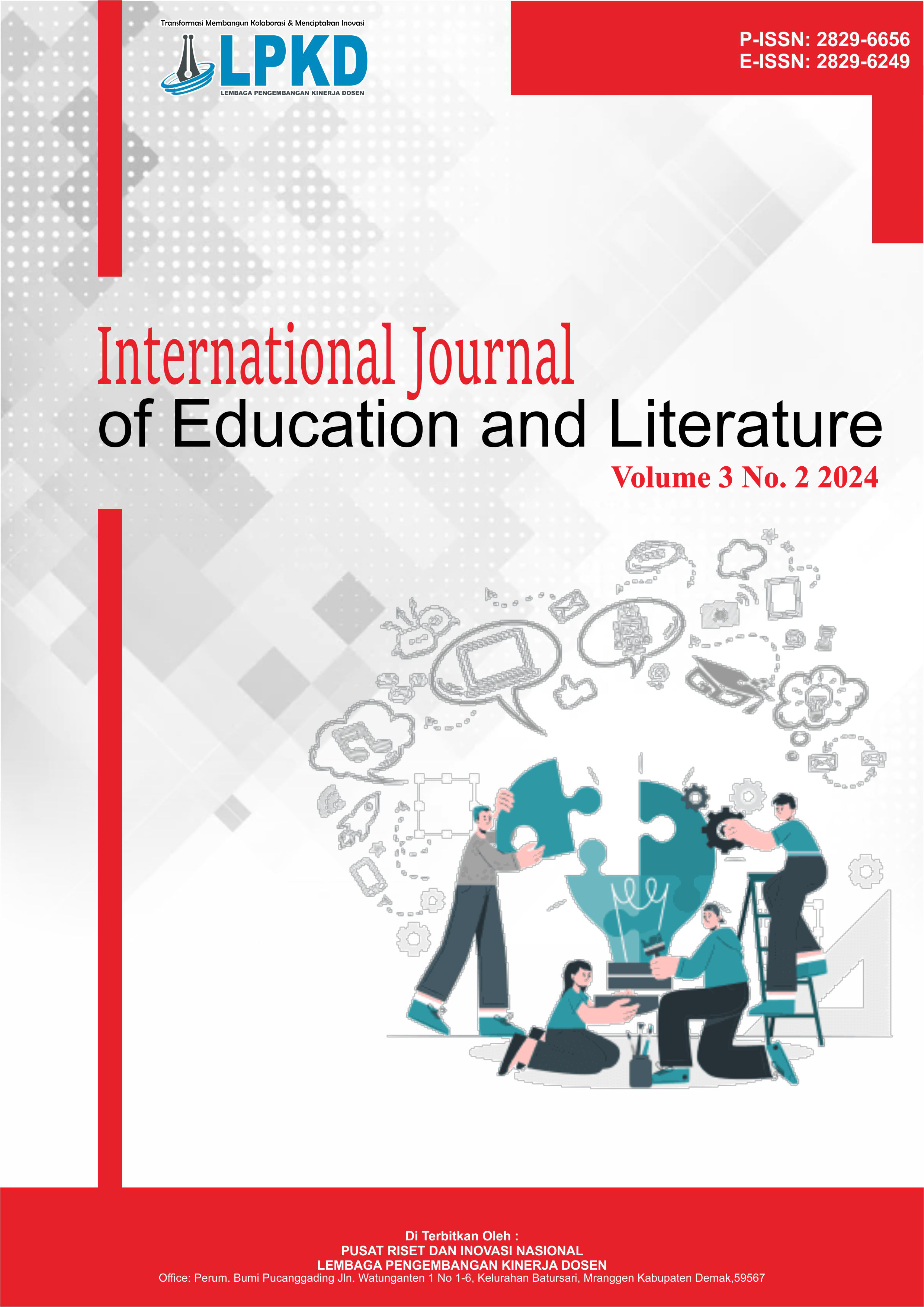Oral Tradition : Idioms In Batak Toba’s Death Ceremony
A Semantics-Cognitive Study
DOI:
https://doi.org/10.55606/ijel.v3i2.106Keywords:
Batak Toba, idioms, image schema, semantics-cognitiveAbstract
Batak Toba is one of the many ethnicities that exist in Indonesia as well as having unique cultures especially regarding to ceremonies and family especially when it comes to holding death ceremonies, in Batak Toba culture they have many. It is due to the fact that culturally and historically they are used to live under the circumstances of different status in the community. As modern as it gets, the death ceremony is still being held in its traditional ways with different ceremonies for different person according to how many families they have. Culture certainly influenced a lot in a community to the oral tradition by saying phrases and idioms that may sound different to another community from different background. This paper is intended to demonstrate the technical meanings of idioms that are commonly used in Batak Toba’s death ceremonies using semantics-cognitive study. This paper used a descriptive-quantitative approach with also the study of library study. The idioms that are written in this paper is searched from asking relatives who are of Batak Toba origin as well as from books, journals and several website articles.
References
Acheoah, J. E., & Olaleye, J. I. (2018). The Nature of Meaning. American Research Journal of English and Literature, 1-6.
Calderon, J. F. (2006). Methods of Research and Thesis Writing (2nd Edition). Mandaluyong City: National Bookstore.
Chaer, A. (2013). Pengantar Semantik Bahasa Indonesia. Jakarta: Rineka Cipta.
Creswell, J. W. (2003). Research Design : Qualitative, Quantitative, and Mixed Methods Approaches (2nd Edition). Thousand Oaks, CA: Sage Publications, Inc.
Croft, W., & Cruse, D. A. (2004). Cognitive Linguistics. Cambridge: Cambridge University Press.
Fatikhudin, P. (2018). Penamaan Tempat Usaha Berbahasa Asing di Surabaya : Kajian Semantik Kognitif. BASINDO : Jurnal Kajian Bahasa, Sastra Indonesia, dan Pembelajarannya, 88-99.
Hampe, B. (2005). Image Schemas in Cognitive Linguistics : Introduction. In B. Hampe, & J. E. Grady, From Perception to Meaning : Image Schemas in Cognitive Linguistics (p. 1). Berlin: Die Deutsche Bibliothek.
Harvina, Fariani, Putra, D. K., Simanjuntak, H., & Sihotang, D. (2017). Dalihan Na Tolu Pada Masyarakat Batak Toba di Kota Medan. Banda Aceh: Balai Pelestarian Nilai Budaya Aceh.
Neisser, U. (2014). Cognitive Psychology. New York: Taylor & Francis.
Pratiwi, H. A. (2018). Idiom Pada Rubrik Berita Nasional Kategori Pendidikan Dalam Portal CNNIndonesia.com. PENA LITERASI : Jurnal Pendidikan Bahasa dan Sastra Indonesia.
Simorangkir, A. P. (2018). Gondang Sabangunan in a Dea Ceremony of Saur Matua in the Batak Toba Society. International Journal of English Literature and Social Sciences, 1160-1163.
Downloads
Published
How to Cite
Issue
Section
License
Copyright (c) 2024 International Journal of Education and Literature

This work is licensed under a Creative Commons Attribution-ShareAlike 4.0 International License.







